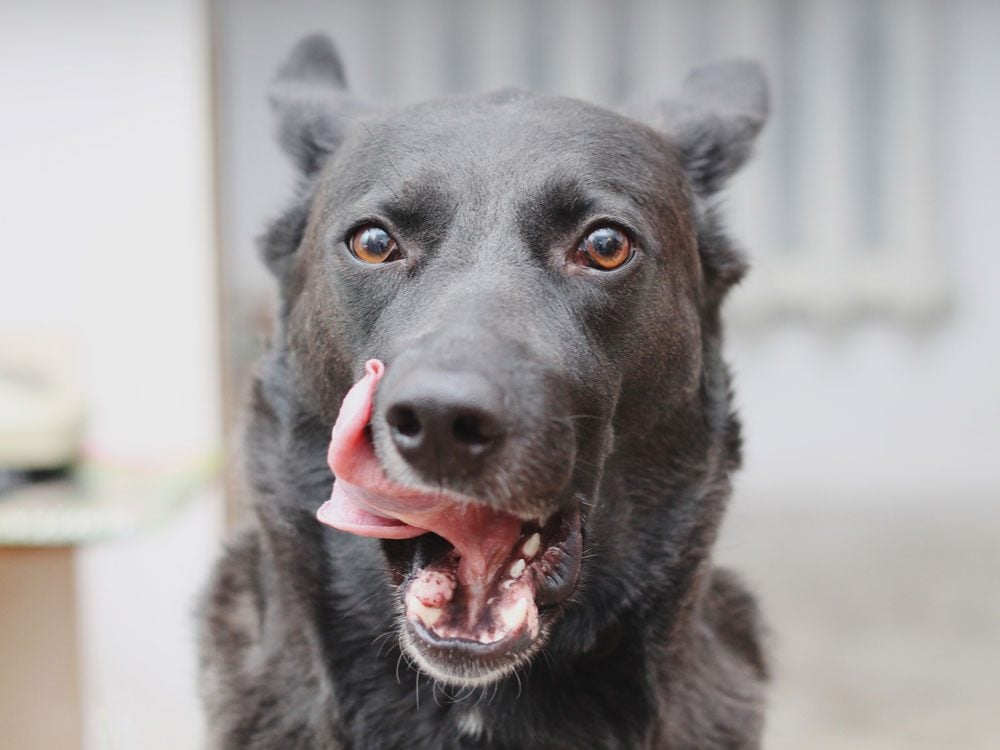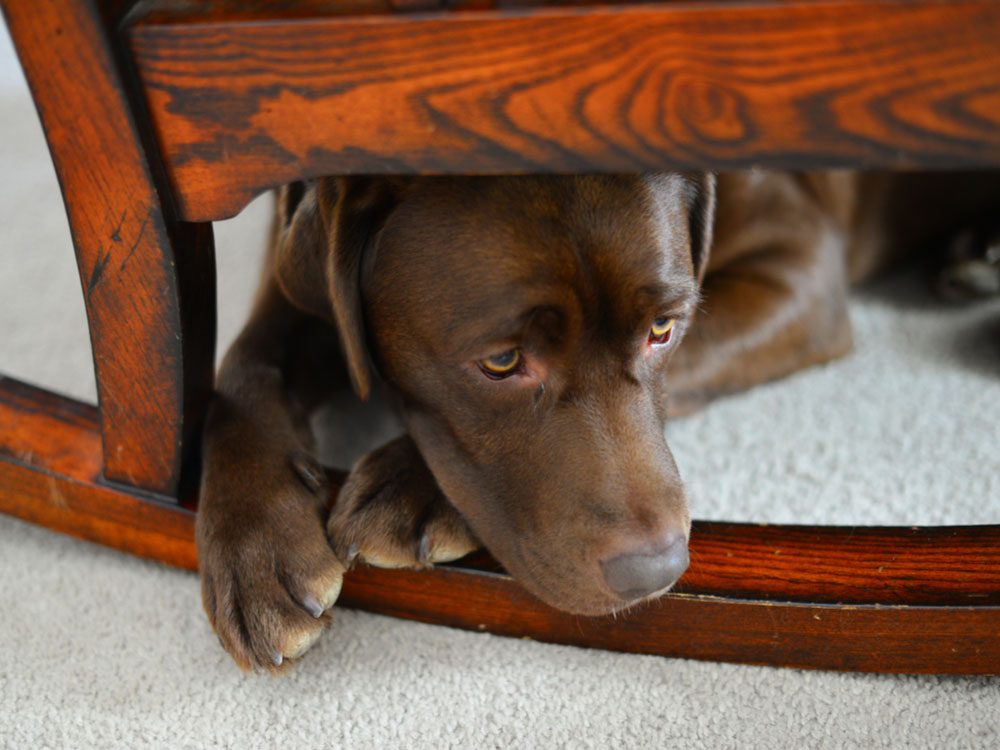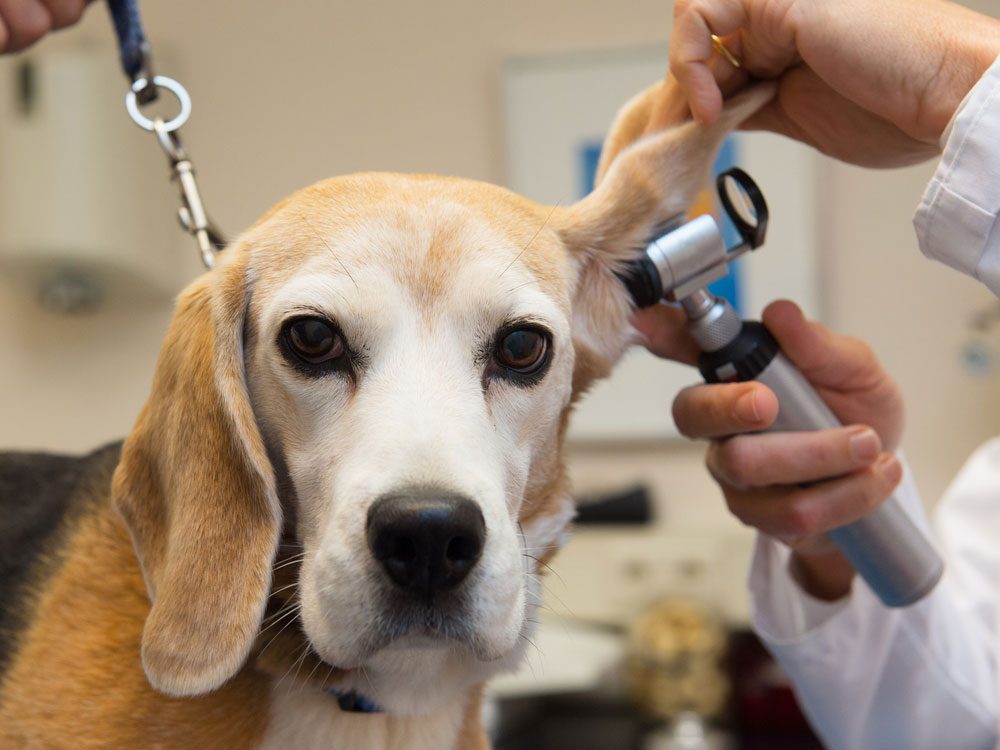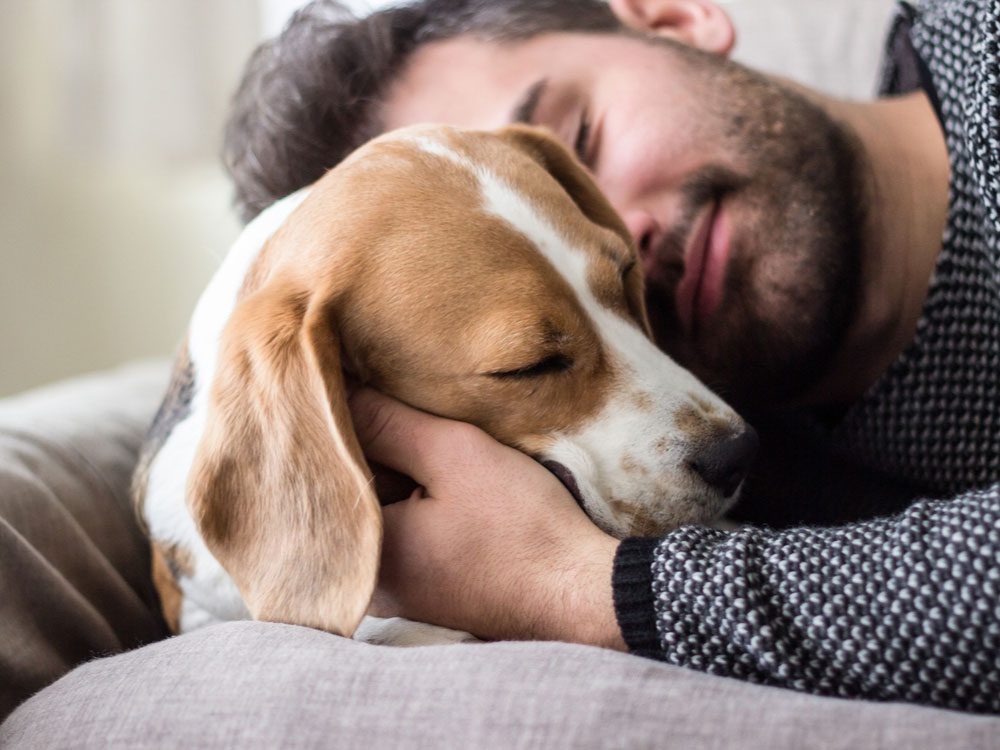
Dog Behaviour: If Your Dog Looks Remorseful When You Walk in the Door and See a Mess…
They’re expecting punishment but don’t necessarily know that what they’ve done is wrong. Alexandra Horowitz, a professor at Barnard College in New York City whose research focuses on canine cognition, put that “guilty” look to the test in 2009. In the end, it wasn’t linked to whether the dog had transgressed but rather to being scolded by the owner. Subsequent research out of the University of Cambridge found no evidence that dogs can even feel guilt, which is a secondary emotion and more complex than a primary emotion, such as fear.
Discover The Real Reason Dogs Stick Their Heads Out Car Windows!

Dog Behaviour: If Your Dog Licks Their Mouth…
They’re stressed. (Note that the tongue motion is less “You’re about to give me a treat” and more a flicking out, right up to the nose.) Recently, two European studies have highlighted the meaning of this licking. One found that it was a canine response to seeing an angry or aggressive human face on a computer screen; the other determined that dogs lick their mouths—and also look away—in response to a mild threat. If you spot this sign, try reducing your dog’s stress levels. It could be as simple as giving them more physical space.
Stay on the lookout for your pup’s well-being with 10 Ways to Tell if Your Dog Is Healthy.

Dog Behaviour: If There Are Fireworks and Your Dog is Shaking…
The noises are frightening. This is a common reaction, but a surprising number of people don’t realize that shaking and trembling (and hiding or seeking out people) are signs of fear. Whereas only a quarter of owners say their dog is afraid of loud noises, half report these behavioural signs, according to research published in Applied Animal Behaviour Science. If you think your pup would be comforted, pet them and remain nearby. Over the long term, work out a plan: desensitization (gradual exposure) and counter-conditioning (changing the emotional experience to a positive one) are effective; you could also discuss medication with your vet.
Also, check out The Real Reason Your Dog Freaks Out During a Thunderstorm!

Dog Behaviour: If You’re at the Vet and Your Dog’s Tail is Down…
They’re anxious. Obvious signs of an unhappy dog include hiding or trying to leave the exam room, but commonly missed triggers range from a tucked tail and lowered ears to trembling. If your dog gets stressed at appointments, ask what can be done. Many vets now use food to make the experience more fun.
Actual veterinarians reveal their juiciest stories and gossip!

Dog Behaviour: If Your Dog Leans Into You During a Petting Session…
They like it! If you’re unsure that a dog is enjoying being petted, stop, then gauge their reaction. This is called a consent test. If they choose to wander off, the session is over. Other signs of discomfort include sniffing the floor, looking away and panting. However, if they lean on you or paw at you to get more cuddles, they feel comfortable, so continue! Preferred spots on their bodies are to either side of the chest and under the chin.